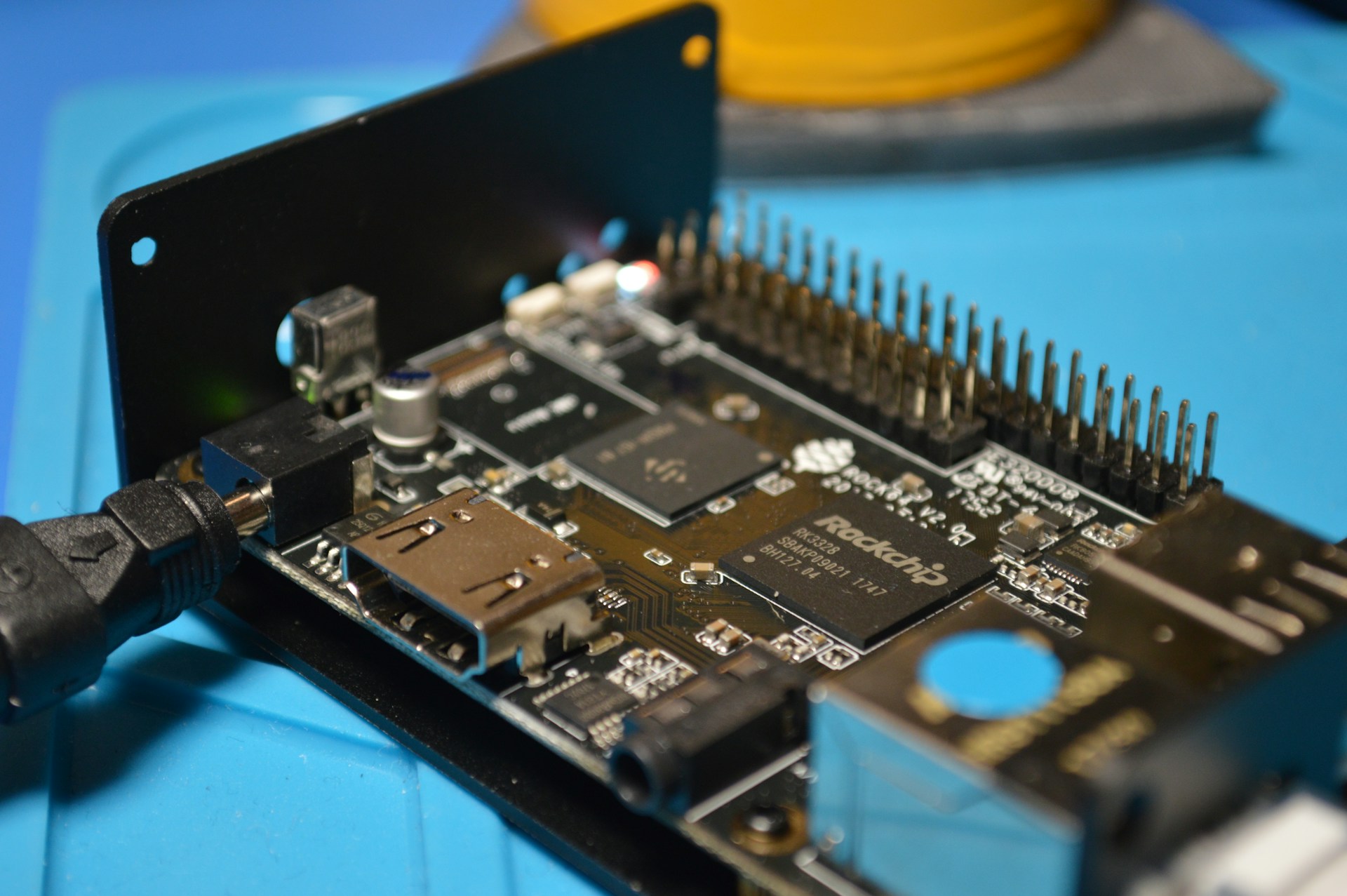Embedded systems are at the heart of many devices and applications we use every day, from smartphones and smart appliances to cars and industrial machines. However, finding skilled professionals to develop these systems is becoming increasingly difficult. The demand for talent is high, but there simply aren't enough qualified people with specialised expertise to fill embedded systems jobs.
In this guide, we will understand why there are skill gaps within the embedded systems industry and uncover the key strategies businesses can take to help bridge skill gaps in embedded systems development.
Understanding the Skill Gap in Embedded Systems Development
Before diving into the key strategies employers can use to bridge skill gaps, it is important to understand why skill gaps are currently prevalent in the embedded systems industry.
Let’s break it down:
1. Evolving technical advancements
Undoubtedly, the embedded systems industry is continuously evolving due to technical advancements. Changing technology means there is a huge demand for professionals who can advance their skills and stay updated with the latest expertise.
Staying current with these advancements is essential for maintaining competitiveness and driving innovation within the industry. Companies need skilled professionals to integrate new technologies into their systems, ensuring they remain at the forefront of technological progress.
2. Increase in demand
As we previously discussed, industries like automotive, aerospace, medical devices, consumer electronics, and embedded systems play a crucial role in product development. However, there aren't enough skilled engineers who understand how these systems work, so companies end up competing for a limited pool of talent.
Besides this, global demand for embedded systems professionals drives intense competition worldwide. According to research, the projected growth of the global embedded systems market indicates an increase from $100.04 billion in 2023 to $161.86 billion by 2030. As the market expands, the demand for talent increases, creating localised shortages in regions or industries where skilled engineers are in high demand but scarce.
3. Limited education programmes
A further underlying cause of skill gaps stems from educational programmes focusing more on foundational concepts than advanced topics and failing to keep pace with rapid technological advancements. This approach often means students miss out on exposure to cutting-edge technologies and practical applications crucial for real-world scenarios, creating a mismatch between what industries need and what graduates are ready to deliver.
Limited hands-on experience in critical areas like hardware design and firmware development further widens these gaps, leaving a shortage of skilled professionals equipped to meet the requirements of industries relying on embedded systems.
So, with this in mind, let’s explore how businesses can address skill gaps in embedded systems development and attract and retain talent:
1. Invest in Training and Development
First, let’s dive into the importance of investing in training and development in embedded systems jobs. Investing in training and development is crucial for nurturing skilled professionals in embedded systems jobs. This investment not only boosts technical proficiency but also equips individuals to keep up with technical advancements. It's all about filling those gaps in both foundational and advanced knowledge, ensuring that professionals are well-prepared for the challenges of the field.
Why is this important?
So, why is investing in training and development beneficial in addressing skill shortages in embedded systems jobs? Here are the key points:
- Skill Enhancement - Training improves engineers' technical proficiency in embedded systems development.
- Adaptability - It prepares professionals to adapt to rapid technological advancements.
- Filling Knowledge Gaps - Addresses gaps in foundational and advanced knowledge not covered in academic curricula.
- Hands-on Experience - Provides practical exposure to hardware design, firmware development, and real-time operating systems (RTOS).
- Industry Alignment - Ensures graduates are equipped with skills aligned with current industry demands.
How can your business invest in training and development?
Below are the key ways your business can invest in training and development to reduce skill shortages and attract and retain talent:
- Internal Training Programmes - Develop in-house training programmes focused on key areas like hardware design, firmware development, and real-time operating systems (RTOS).
- Mentorship and Coaching - Pair less experienced engineers with seasoned professionals to provide guidance, share knowledge, and offer hands-on training.
- Partnerships with Educational Institutions - Collaborate with universities and technical schools to design curricula that align with industry needs and include practical training components.
- Continuous Learning Opportunities - Provide access to online courses, workshops, and seminars that cover the latest advancements and technologies in embedded systems development.
- Certification Programmes - Encourage and sponsor engineers to obtain relevant certifications to validate their skills and knowledge in specialised areas of embedded systems development.

2. Build Junior Talent Pipelines
Next on our list is building junior talent pipelines. Building a pipeline of junior talent is crucial for maintaining a steady flow of new skills and ideas in the field. It helps address future skill gaps, supports ongoing growth, and creates a workforce ready to meet the changing demands of embedded systems engineering. By investing in young professionals, businesses can encourage innovation and secure their future success.
Why is this important?
To effectively address skill shortages in embedded systems development, businesses should understand why talent pipelines are a valuable solution. So, here are the benefits of building junior talent pipelines within your company:
- Future-Proofing the Workforce - Developing junior talent ensures a steady flow of skilled professionals ready to take on future challenges and technological advancements.
- Building Loyalty - Investing in the growth of junior employees increases chances of loyalty and commitment, reducing turnover rates.
- Tailored Skill Development - Training programmes can be customised to meet your company's specific needs and standards, ensuring that new hires are perfectly aligned with your technical requirements.
- Cost Efficiency - Training and promoting from within can be more cost-effective than employing experienced professionals, as it reduces the expenses associated with recruitment and onboarding.
- Innovative Ideas - Junior employees bring fresh ideas and perspectives, which can drive innovation and lead to new approaches in problem-solving and embedded systems development projects.
How can your business build junior talent pipelines?
So, how can your businesses effectively build junior talent pipelines for embedded systems development?
- Partner with Educational Institutions - Collaborate with universities and technical schools to create internship and co-op programmes that offer students hands-on experience in embedded systems development.
- Offer Mentorship Programmes - Pair junior employees with experienced mentors who can provide guidance, support, and transfer their knowledge to help them grow professionally.
- Develop Training Programmes - Implement structured training programmes covering foundational and advanced topics in embedded systems, including hands-on projects and real-world applications.
- Outline Clear Career Paths - Establish clear progression paths for junior employees, outlining the steps and milestones required for career advancement within the company.
- Encourage Continuous Learning - Provide ongoing education and skill development opportunities through workshops, online courses, certifications, and attendance at industry conferences and seminars.
To learn more about building junior talent pipelines to navigate skill shortages in embedded systems development, discover our insightful guide - Leveraging Junior Teams For Embedded Systems Talent Pipelines.
3. Promote Diversity and Inclusion
While investing in training and building talent pipelines is essential, it is crucial that employers are committed to building a diverse workforce to improve employee satisfaction and attract talent to the company.
According to a recent survey, 78% of professionals emphasise the importance of working at a company that prioritises diversity and inclusion, with over 50% regarding it as "highly important." This figure highlights the importance of implementing a strong diversity and inclusion strategy into your workforce to attract and retain talent to bridge skill gaps.
Why is this important?
To give you a clearer idea of why forming a diverse team is essential in addressing skill shortages in embedded systems development, here are the key reasons why your business should adopt this strategy:
- Broader Skill Sets - A diverse team brings together individuals with different backgrounds and experiences, enhancing the collective skill set and building innovative solutions.
- Enhanced Problem-Solving—Diverse perspectives contribute to better problem-solving by offering various approaches and insights that may typically be overlooked.
- Increased Creativity - A mix of cultural, educational, and professional backgrounds encourages creativity and out-of-the-box thinking, crucial in embedded systems development.
- Improved Decision-Making - Diverse teams make more balanced and informed decisions as they consider a wider range of viewpoints and potential impacts.
- Attracting Top Talent - Commitment to diversity and inclusion can make your company more attractive to top talent, helping to fill skill gaps more effectively and stay ahead of the competition.
How can your business promote diversity and inclusion?
Now that we have uncovered the importance of hiring for diversity and inclusion within embedded systems jobs, let’s explore exactly how your business can implement this strategy:
- Revise Recruitment Practices - Modify job descriptions to focus on skills and attributes rather than specific backgrounds or experiences. Use inclusive language to attract a diverse pool of candidates.
- Expand Recruitment Channels - To broaden your talent pool, use diverse recruitment channels and build partnerships with organisations focused on underrepresented groups.
- Implement Bias Training - Provide training for hiring managers to recognise and manage unconscious biases during the recruitment and selection process.
- Form an Inclusive Culture - Encourage open communication and respect for diverse perspectives within the workplace. Support employee resource groups (ERGs) or affinity networks to create community and belonging.
- Regularly Evaluate Progress - Measure diversity metrics and assess the effectiveness of diversity initiatives. Adjust strategies as needed to continuously improve diversity and inclusion efforts.
4. Be Open to Remote Working Opportunity
Research suggests that a significant portion of technology firms have embraced a distributed workforce model, with 72% of tech companies having employees who work remotely or from locations outside of the company's owned office spaces.
As businesses begin to embrace remote work, it becomes prevalent that remote settings contribute to bridging skill gaps and attracting and retaining talent.
Why is this important?
Why should employers embrace remote work roles in embedded systems development? How does this help address skill shortages? Here’s why:
- Access to Global Talent - Remote work allows companies to hire skilled professionals from anywhere globally, expanding the talent pool beyond local geographical limitations.
- Flexibility - Employing remote workers offers flexibility in work hours and locations, which can attract and retain professionals who value work-life balance.
- Cost-Efficient - Hiring remote workers can reduce overhead costs associated with office space and facilities, allowing companies to allocate resources more efficiently.
- Varied Perspectives - Remote work encourages diversity by facilitating the inclusion of individuals from different backgrounds and regions, increasing innovation.
- Scalability - Remote work enables companies to quickly scale their teams based on project demands without local hiring limitations.
How can your business adopt remote work settings?
- Establish Remote Work Policies - Develop clear policies outlining expectations for remote work, including communication protocols, work hours, and performance metrics.
- Invest in Technology - Provide remote workers with necessary tools and technologies for effective collaboration, such as video conferencing software, project management tools, and secure access to company systems.
- Offer Flexibility - Be open to flexibility in work hours and location. Consider different time zones and personal preferences to attract a broader range of talent.
- Create Virtual Collaboration Spaces - Build virtual teamwork by creating online platforms for sharing ideas, conducting meetings, and collaborating on projects.
- Ensure Data Security - Implement robust cybersecurity measures to protect confidential company data and ensure compliance with data protection regulations, especially when dealing with embedded systems development.

Final Word: Navigating Skill Gaps in Embedded Systems Development
In the embedded systems industry, staying ahead requires a workforce equipped with cutting-edge skills. Technical advancements continually reshape the market, demanding professionals who can adapt and innovate. However, the supply of skilled embedded systems engineers falls short of the growing demand, creating a persistent challenge for companies across various sectors.
To bridge these skill gaps, investing in training and development is essential. This not only enhances the technical proficiency of existing talent but also prepares them to tackle emerging technologies effectively. Building junior talent pipelines ensures a continuous flow of fresh ideas and skills, bolstering long-term sustainability and growth within organisations.
Promoting diversity and inclusion is crucial. Diverse teams bring varied perspectives that build creativity and improve decision-making, which are essential traits in embedded systems development. Embracing remote work options further expands access to global talent pools, offering flexibility and scalability while reducing operational costs.
By adopting these strategies, businesses can navigate skill shortages effectively and position themselves for success in the embedded systems industry.
Specialised Embedded Systems Recruitment Solutions
At Amoria Bond, our focus lies in sourcing top talent for companies seeking embedded systems engineers, advanced technology specialists, and professionals in the tech sector. Working with clients in more than 40 countries, we match your business with exceptional candidates. Supported by a team of expert recruitment consultants, we are committed to identifying suitable candidates on a global scale.
Whether you are a business looking for embedded systems or tech expertise, or a candidate looking for your next role, we possess the resources to fulfil your requirements. Contact us today to explore how we can support you.






